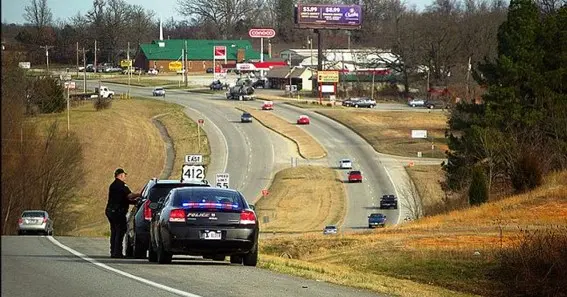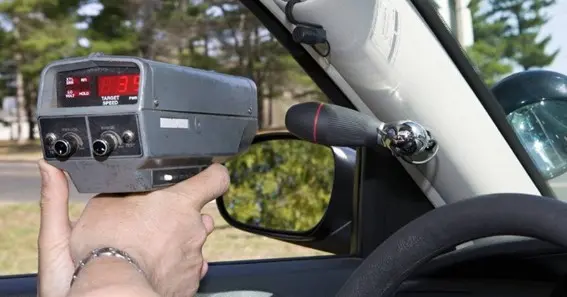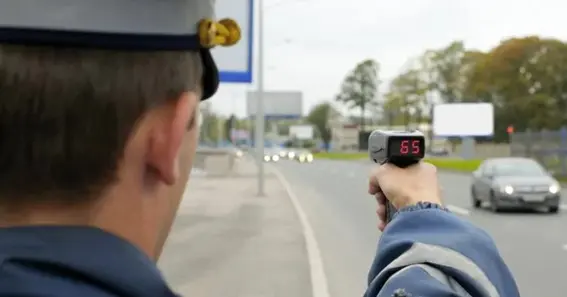What is a speed trap? A speed trap is a location where law enforcement uses hidden equipment, such as radar or cameras, to monitor and enforce vehicle speed limits. Police hide speed traps on roads to monitor traffic. People put them up to catch speeding drivers and enforce traffic laws. Speed traps keep roadways safe by preventing risky driving and enforcing speed restrictions. Understanding speed traps and their effects might help drivers avoid fines and stay safe. In this article, we discuss about what is a speed trap. and more about it.
What Is A Speed Trap?
A speed trap is a location where law enforcement uses hidden equipment, such as radar or cameras, to monitor and enforce vehicle speed limits. Police hide equipment that lets them view and record car speeds in a speed trap. This gear includes radar guns, laser speed detectors, and self-shooting cameras. A speed trap’s principal objective is to ticket speeding drivers. This reduces road accidents.
People regularly install speed traps in accident-prone or speeding areas. The police enforce speed limits in these locations to deter reckless driving and ensure drivers observe signage. A deterrent, speed traps encourage drivers to drive safely and obey traffic laws. Speed traps may detect a car’s speed from afar. This lets cops catch speeding automobiles without chasing them.
Essentials Of Recognizing A Speed Scam

Speed traps monitor and control car speeds, making them vital to traffic police. After reading about what is a speed trap, knowing how they work and their impacts help cars stay safe. Discover speed traps here.
Speed Trap Purpose
People put up speed traps to reduce speeding and enforce speed limits. Speed traps are monitored, and speeders are fined to minimize accidents. Drivers obey speed limits more when there are speed traps. It makes the road safer for everyone.
How Speedtraps Work
If you read properly what is a speed trap, you must know different systems detect and measure vehicle speeds in speed traps. Laser speed detectors, radar guns, and automatic speed cameras are standard. Radar guns measure vehicle speed by bouncing radio waves off moving vehicles. Laser speed detectors estimate car speed by calculating the laser beam bounce time—automated speed cameras photograph and record license plates of speeding cars for ticketing.
Common Speed Trap Locations
People deploy speed traps where speeding is an issue or crashes are expected. School zones, residential areas, roads, and junctions with speeding penalties are typical search grounds. Speed traps enforce speed limits in high-risk areas and improve traffic safety.
Speed-Detecting Gear Types
Different traffic cameras utilize different speed detection systems. Mobile radar guns monitor car speed using radio waves. Laser speed trackers (sometimes termed LIDAR devices) employ laser beams to measure speed more accurately. Fixed sites have automated speed cameras that photograph speeding autos and issue citations. The enforcement area’s needs determine the tools used.
Legal Considerations
Speed trap users must respect local legislation. Different places have different speed trap rules. Some localities require speed trap signs, whereas others don’t. Speed traps operate best when cops follow the rules.
Avoid Speed Traps

Drivers can avoid speed traps in several ways. The best way to avoid speeding tickets is to follow written speed limits. Drivers can adjust their speeds by being aware of speed traps around schools and in residential areas. Apps and devices can send real-time speed trap and enforcement alerts, keeping drivers informed and compliant.
Impact On Driving
People drive differently when speed traps appear, so knowing what is a speed trap is very important. Drivers are more likely to obey speed limits when speed traps are present. This may reduce crashes and speeding. Speed traps may reduce speeding, improving road safety.
Troubles And Disputes
People sometimes say speed traps are just profit-making rather than safety measures. Critics say speed traps in areas with low-speed limits give drivers too many tickets and cost too much. Speed traps may prioritize profit over safety, lowering public trust in traffic enforcement.
Improvements In Technology
As technology has developed, speed traps have grown increasingly successful. Today, technology monitoring speed is more accurate and more challenging for drivers to mislead. New technologies like mobile speed cameras that can be utilized in multiple places and more powerful radar and laser systems have made speed enforcement more effective. These technological improvements help make speed limits more accurate and help police apply them better.
Conclusion
Speed traps are essential to traffic management programs that try to make roads safer and reduce speeding accidents. People can drive more safely and avoid fines if they know what speed traps are, how they work, and how they change how people drive. Knowing the speed limits and where the most prevalent speed traps are located, as well as the technology used to police speed limits, can assist drivers in respecting the rules of the road and make them safer overall. In the above, we discuss what is a speed trap and explore more about it. Regardless, drivers should always be aware of speed limits and traffic regulations to avoid penalties and ensure road safety.
FAQ
How Have Speed Traps Detected Speeding Cars?
Speed traps use radar, lasers, or cameras to find cars moving too fast. From a distance, these gadgets examine the speed of cars and record any breaches.
Can You Put Up Speed Traps Anywhere?
The legality of speed traps varies by area. You have to follow the rules set by your local government when and where you can use speed traps to stay safe and legal.
Do Speed Traps Reduce Accidents Properly?
Yes, speed traps do help minimize the number of accidents on the road by preventing drivers from going too fast and urging them to observe the speed limits.
How To Avoid Speed Traps?
Drivers can avoid speed traps by observing the speed limits, understanding where the most prevalent traps are, and using applications or devices that let them know when speed traps are coming up.
Why Do Speed Traps Annoy Some?
Putting speed traps in low-speed areas has created disagreement because some argue they prioritize profit over safety.
What Technology Is Used In Speed Traps?
Tools include:
Radar guns: Measure vehicle speed using radio waves.
Lidar (laser radar): Uses laser beams for precise speed detection.
Speed cameras: Automatically capture speed violations.
How Can Drivers Identify A Speed Trap?
Reports from driving apps like Waze.
Signs of a speed trap include:
Hidden or parked police cars.
Sudden changes in the speed limit.
Check out this insightful post what-is-a-smashburger
Sources:
https://www.dictionary.com/browse/speed-trap
https://dictionary.cambridge.org/dictionary/english/speed-trap










